For a newer article on this topic visit: 10 Alternatives To Google And Facebook Ads
For this month’s series, we’re providing a little bit of perspective on the hectic events of 2013. As we’ve left Enhanced Campaigns pretty well covered this year, this week we’ll be dedicating our time to some of the other (non-Enhanced Campaigns) initiatives, tactics, strategies, and features that we used to excel in 2013 here at PPC Hero.
Up first? Me, and all the different ad networks I’ve explored in addition to (or instead of) AdWords over the course of the last year to grow both my accounts and their returns. It’s been a hot-button topic throughout the year, especially in the advent of Enhanced Campaigns. If some of these names sound familiar… well, then it’s probably about time you got on board.
1. Bing
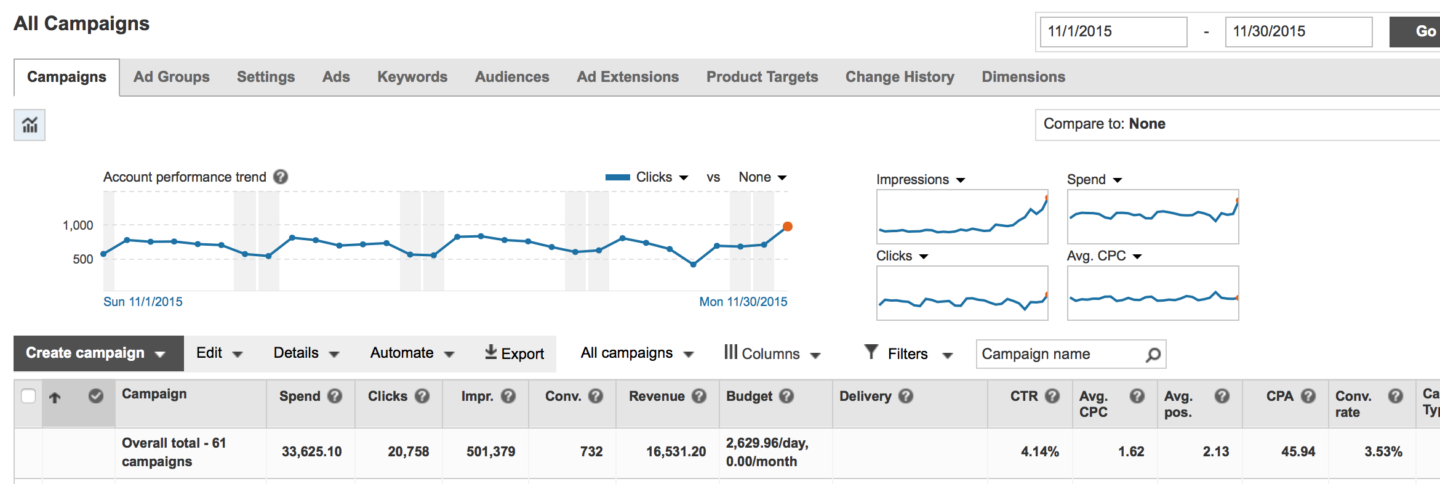
The biggest beneficiary of the Enhanced Campaigns kerfluffle? Bing, by far. As Matt Van Wagner declared at Hero Conf this last April in Austin – you should *really* be doing Bing, especially as Enhanced Campaigns muddies the PPC landscape. While you should be wary of Bing Search Partner Lead Quality, advertising on Microsoft’s search platform can lead to great gains for any account.
Case in point – In April of this year, I pitched a client on starting a Bing account. Now in December 2013, here’s how that decision has panned out:
AdWords: 2,322 Conversions at a $78.13 CPA.
Bing: 907 Conversions at a $64.80 CPA.
I’ve had my difficulties with the Bing Ads platform in the past, but you can’t argue that math. That’s a 40% increase in Conversion volume at only 82% of the Cost Per Conversion. If you’re tapped out on Google *or* just looking to be more efficient with your existing budget, you should definitely jump in.
2. Facebook
Turns out, I’d just wrote about this recently. But regardless, Facebook is offering more and more compelling features to test out for your business. While some of the neater tricks require a Facebook presence (or just a page, really), the robust targeting methods allow you to find users that align with your customer demographics in ways that Google just can’t match.
Interest Categories, Affinity Audiences, and Age/Gender targets in AdWords don’t hold a candle to the power of a Lookalike Audience. As an added bonus, dark posts can drive genuine engagement with your ads. Brother, you haven’t lived until you’ve had someone “Like” or “Share” a paid advertisement. Makes me feel all warm and fuzzy inside just thinking about it.

3. AdRoll
AdRoll is one of the more well-known networks that utilize the Facebook Exchange (FBX) to remarket to users that have previously visited your site. In truth, I have some minor nitpicks with the reporting functionality and ad approval process, and they don’t interface with our reporting platform at all… but it is an easy way to get initial buy-in for some Facebook work.
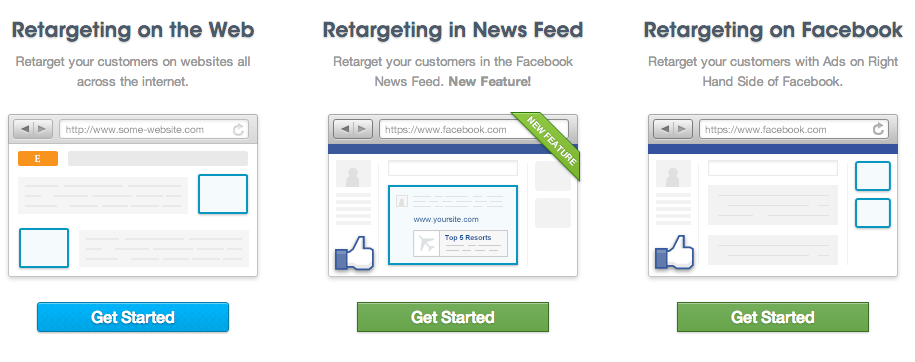
They’re also pretty feature-rich, allowing you the ability to do normal web remarketing, Facebook Sidebar remarketing, and Facebook News Feed remarketing. In a recent announcement, they’ve also announced beta signups for Twitter Retargeting with Tailored Audiences.
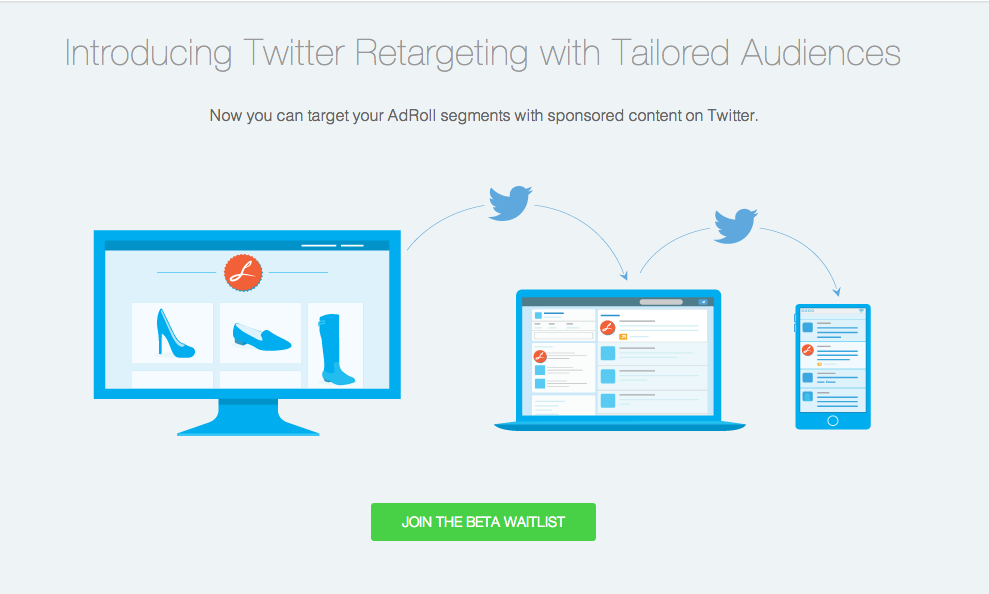
Speaking of which…
4. Twitter
Twitter can be an incredibly powerful social platform, letting you participate in all kinds of conversations and movements around the world – like my beliefs about the practice of preheating an oven, for instance. Should you find yourself wanting to do more with this social media mainstay – even beyond AdRoll’s Tailored Audience approach, advertising with promoted tweets can be another avenue of expansion for your account.
If you’re curious about the do’s and don’ts of Twitter advertising, I’ve got some recommended viewing for you right here – courtesy of Carrie Albright of PPC Hero, John Lee of Clix Marketing, and the fine folks at 3Q Digital.
5. LinkedIn
Another “Greatest Hit of 2013” coming to you from the power duo of Albright & Lee, Carrie and John discussed the top ways for you to grab attention on LinkedIn with a practical video designed to teach you the basics of advertising on the networking giant.
6. YouTube
So this one is kind of a cheat, as it can be managed via an AdWords account. But moving on…
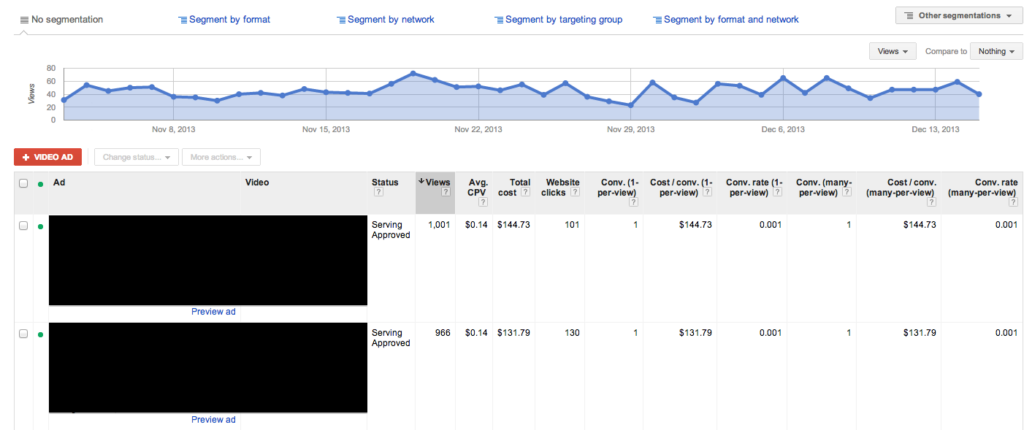
These first six platforms are likely going to be part of any comprehensive digital strategy – but for those of you who haven’t explored your advertising options on the second-largest search engine on Earth, you should give it a try. There are some pretty neat tricks you can use with your existing AdWords account that can make the YouTube advertising experience positively painless.
However: their keyword targeting suggestions remain awful. I’m not targeting Selena Gomez for industrial equipment, no matter how often you ask me, YouTube. While there are still discussions to be had regarding YouTube user purchase intent when viewing cat videos, I can guarantee you’ll need to know how it works in 2014.
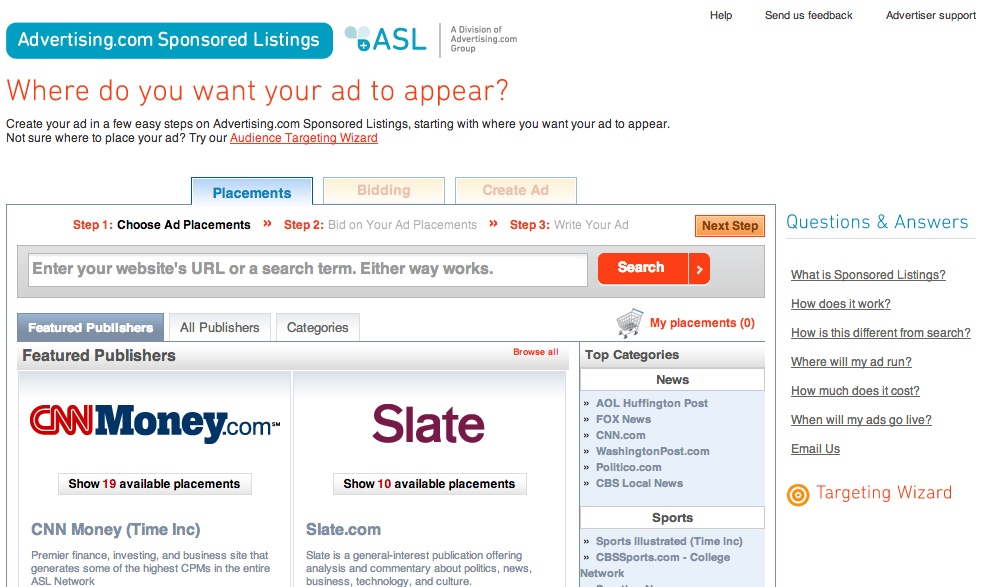
This platform is designed to serve sponsored listings throughout the Advertising.com/AdSonar premium network – including sites like the Huffington Post, Slate, CNN Money, and the AOL.com homepage. That’s right: the AOL Homepage.
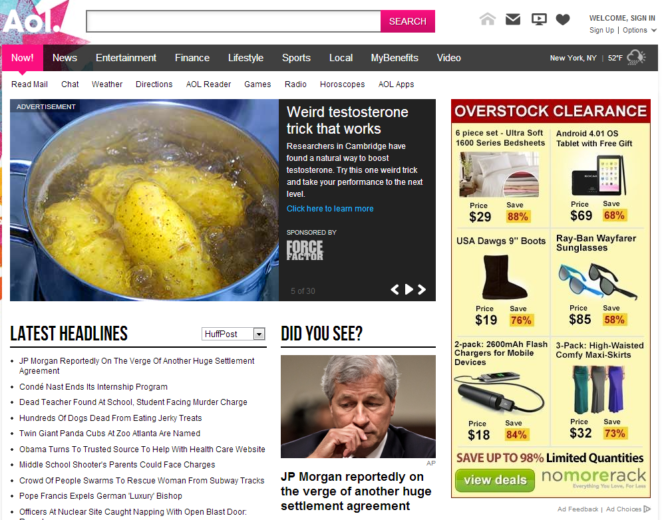
I’ve been working with an implementation team over there to launch for a few of my clients, and they’ve been very responsive and helpful throughout the entire process. Good customer service wins points with me, so thanks to Mr. Shaughnessy – he and I will be talking again soon.
If you have a client that absolutely *must* show up on the Huffington Post (like I do), then this is the place to go.
Now, in the interest of brevity, I’ll lump a few together for you to explore similar options…
8. Infolinks
9. Result Links
As mentioned previously, these are some in-text advertising options that allow you to target users with ads tailored to the text passages that align with your keyword targeting options. So, if you’ve got a product that people blog, talk, or otherwise write about, it might behoove you to give these a try.
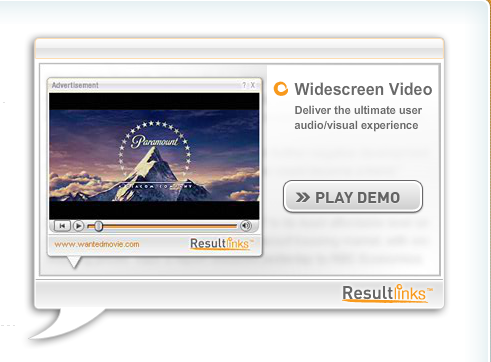
Personally? I’ve seen great returns on the Infolinks platform in particular – but this was for a product that features a metric *ton* of traffic out there in the blogging world. This might be one to test out for yourselves.
10. AdBlade
Admittedly, the name is pretty silly. But this is another ‘premium’ advertising platform that claims a reach of over 200 million users. However, there were a few downsides – the bidding is done on a CPM basis (which, in hindsight, is more of a crippling disability rather than mere downside) and there’s a distinct lack of transparency on the quality of site placements. For a site that claims a ‘premium’ inventory, they don’t let you know where your ads actually went.
11. Trafficvance
12. Clicksor
These are a few more contextual display networks for you to experiment with – I’ve had a little more experience with Clicksor, but found their Conversion Tracking implementation pretty cumbersome.
Here’s a fun note: According to Wikipedia, there have been issues with end users on the Clicksor network being subjected to malware but, and I quote: “However, Clicksor has been consistently updating their ad management system to avoid malicious ads – they are currently using The Media Trust, an ad verification system that industry giants like Google, Yahoo and YouTube also use.”
Guys, I think someone from Clicksor wrote that on Wikipedia.
13. eBay Enterprises (The Network Formerly Known As Fetchback)
I’ve been working on implementing an advertising campaign with these folks for so long, they’ve gone through a name change. Really, though, the length of time has been more an issue of herding the particular client in the direction of completing tasks – my current eBay Enterprises contacts have been stellar to work with so far.
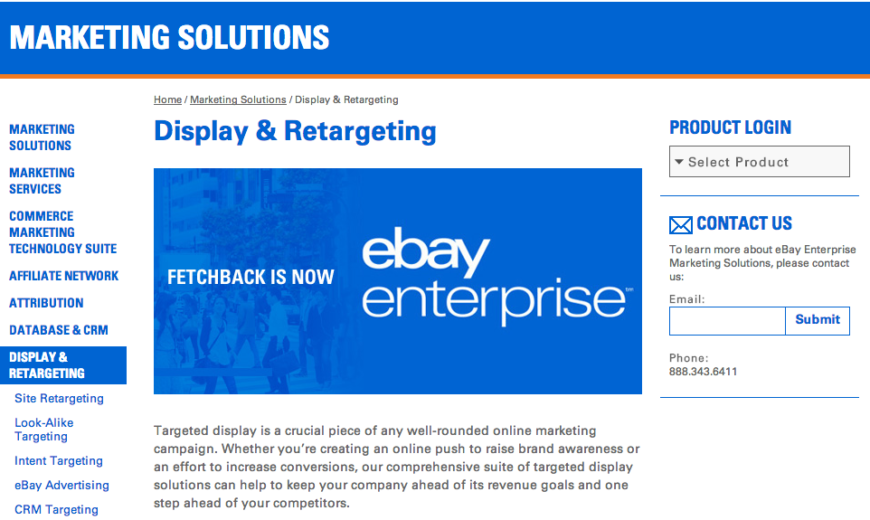
They have a pretty nice selection of products to choose from, featuring Site and Look-Alike Retargeting, among other features. They also assist in generating creatives, both animated and dynamically generated via your product feed. Pretty snazzy stuff.
14. Retargeter
15. RocketFuel
I’ll let you know about my experience with these two platforms as soon as they get back to me. Maybe this might spur them on? Regardless, they both look promising from an ROI and reach standpoint – I’ll be eager to see if the experience lives up to the hype.
And that’s it! Kind of a marathon, I know. However – this list is by no means definitive, so if you’ve got some extra platforms you’d like to throw in, or some practical advice for expanding your horizons beyond AdWords, let us know in the comments. Thanks for reading!




